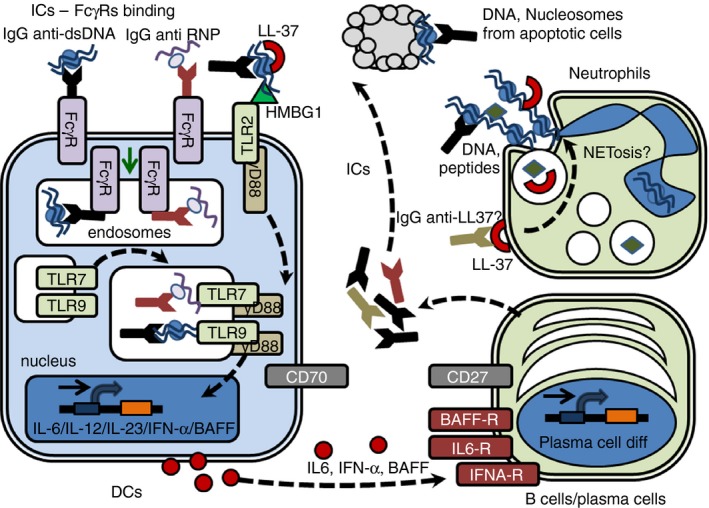Figure 2.

Hypothetical circuits and interactions between dendritic cells (DCs), neutrophils and B cells in systemic lupus erythematosus (SLE). Hypothetical circuits, interactions and mechanism between DCs, neutrophils, B cells and the stimulatory effects of nucleic acid containing immune complexes (ICs). Apoptotic antigens are recognized by autoantibodies present in SLE‐susceptible hosts. ICs containing self‐DNA or ‐RNA are internalized by FcγRs targeting Toll‐like receptor 9/7 (TLR9/7) expressing endosomes, a process enhanced by the presence of LL‐37. Extracellular ICs containing self‐DNA or ‐RNA need to be transported into TLR7/9‐containing endosomes to fully activate DCs. TLR9/7 ligation promotes DC activation with production of pro‐inflammatory cytokines, such as interferon‐α (IFN‐α), interleukin‐6 (IL‐6), IL‐12 and IL‐23, which may interact with B cells inducing cellular activation, plasma cell differentiation and antibody production. Also, ICs containing HMGB1 activate DCs by a TLR2‐dependent mechanism. The recognition of autoantibodies against neutrophil peptides (LL‐37) exposed on the cell surface may trigger neutrophil extracellular trap (NET)‐osis with the subsequent releasing of nuclear antigens and new ICs formation when interacting with anti‐nuclear antibodies produced by stimulated plasma cells.
